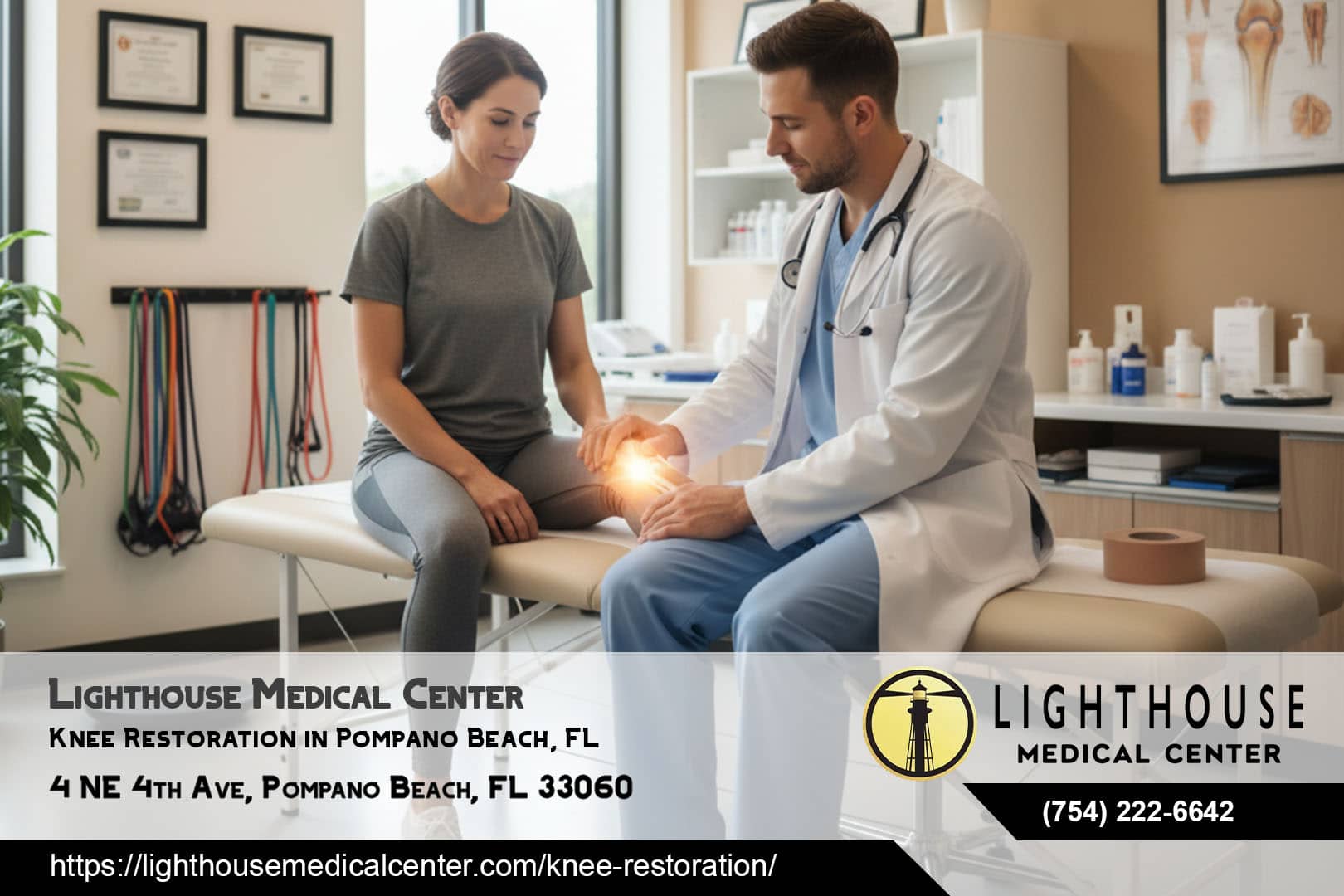Range of Motion and Flexibility Enhancement
Knee joint stiffness significantly impacts functional mobility and contributes to compensatory movement patterns that increase injury risk. Targeted stretching protocols address muscle tightness in the quadriceps, hamstrings, iliotibial band, and calf musculature.
Manual therapy techniques including joint mobilization and soft tissue manipulation complement active stretching interventions. These combined approaches restore normal joint mechanics and optimize tissue extensibility.
Progressive Flexibility Protocol Phases:
Phase One: Gentle range of motion exercises focusing on pain-free movement Phase Two: Active stretching with emphasis on muscle groups limiting knee mobility
Phase Three: Dynamic stretching integrated with functional movement patterns Phase Four: Sport-specific or activity-specific flexibility maintenance
Proprioceptive Training and Balance Enhancement
Proprioceptive deficits commonly accompany knee dysfunction and increase fall risk while compromising functional stability. Balance training exercises improve joint position awareness and muscular co-contraction patterns that enhance dynamic stability.
Single-leg balance progressions, unstable surface training, and perturbation exercises challenge proprioceptive systems while building confidence in knee stability. These interventions prove particularly valuable for active individuals returning to recreational activities.
Advanced Injection Therapies
Corticosteroid Injection Protocols
Intra-articular corticosteroid injections provide rapid anti-inflammatory effects for patients experiencing acute knee pain and swelling. Dr. Don Pham utilizes precision injection techniques to deliver medication directly into the joint space for maximum therapeutic benefit.
These injections typically provide relief lasting several weeks to months depending on individual response patterns and underlying pathology severity. The anti-inflammatory effect reduces pain while improving functional capacity during the treatment window.
Corticosteroid injections serve as valuable adjuncts to comprehensive treatment protocols, allowing patients to participate more effectively in physical therapy and lifestyle modification programs while managing acute symptoms.
Viscosupplementation Treatment Options
Hyaluronic acid injections supplement natural joint lubrication while providing cushioning effects that improve knee mechanics. This viscosupplementation approach addresses the decreased synovial fluid quality commonly associated with osteoarthritis progression.
Hyaluronic Acid Injection Comparison:
| Product Type |
Injection Frequency |
Duration of Relief |
Primary Mechanism |
| Low molecular weight |
Weekly series of 3-5 injections |
3-6 months |
Improved lubrication |
| High molecular weight |
Single injection or 2-injection series |
6-12 months |
Enhanced viscoelasticity |
| Cross-linked formulations |
Single injection |
6-12 months |
Extended residence time |
Treatment selection depends on patient presentation, activity level, and previous injection response history. Dr. Pham evaluates individual factors to optimize injection protocol selection for each patient.
Regenerative Medicine Applications
Platelet-rich plasma and stem cell therapies represent emerging treatment modalities that harness the body's natural healing mechanisms. These regenerative approaches may stimulate tissue repair processes while reducing inflammation in damaged knee structures.
Research continues to evaluate optimal protocols and patient selection criteria for regenerative interventions. At Lighthouse Medical Center, we stay current with evolving evidence to offer appropriate candidates access to these advanced treatment options.
The patient's age, activity level, and degree of joint degeneration influence candidacy for regenerative medicine approaches. Dr. Pham discusses these options with suitable patients as part of comprehensive treatment planning.
Medication Management Strategies
Over-the-Counter Anti-Inflammatory Options
Nonsteroidal anti-inflammatory drugs provide both analgesic and anti-inflammatory effects that address multiple aspects of knee pain. Acetaminophen offers pure analgesic benefits without anti-inflammatory action, making it suitable for patients with contraindications to NSAIDs.
Topical anti-inflammatory preparations deliver medication directly to affected tissues while minimizing systemic absorption and associated side effects. These formulations prove particularly valuable for patients requiring long-term pain management.
Medication Selection Considerations:
Cardiovascular risk factors influence NSAID selection and dosing protocols Gastrointestinal history affects oral anti-inflammatory medication choices Kidney function status determines appropriate medication categories Concurrent medication interactions require careful consideration
Prescription Pain Management
Prescription medications may be indicated for patients experiencing moderate to severe knee pain that interferes with daily activities and sleep patterns. Dr. Pham carefully evaluates each patient's pain severity, functional limitations, and medical history before prescribing stronger medications.
Short-term prescription medication use can facilitate participation in physical therapy and lifestyle modification programs by providing adequate pain relief during the initial treatment phase. Long-term medication dependence is avoided through comprehensive treatment approaches that address underlying dysfunction.
Integrated Treatment Approach Benefits
Multi-Modal Protocol Advantages
Combining multiple non-surgical interventions produces superior outcomes compared to single-treatment approaches. The synergistic effects of lifestyle modification, physical therapy, and appropriate injection therapy optimize tissue healing while maximizing functional improvement.
At our Pompano Beach facility, Dr. Don Pham develops individualized treatment plans that integrate evidence-based interventions according to each patient's specific needs and goals. This personalized approach ensures optimal resource allocation and treatment timing.
Treatment Integration Timeline:
Weeks 1-2: Initial assessment, pain management, gentle mobility restoration Weeks 3-6: Progressive strengthening, continued pain management, activity modification Weeks 7-12: Advanced strengthening, functional training, injection therapy if indicated Months 3-6: Maintenance protocols, activity progression, outcome assessment
Patient Education and Self-Management
Successful non-surgical knee restoration requires active patient participation in treatment protocols and lifestyle modifications. Dr. Pham emphasizes patient education regarding proper exercise technique, activity modification strategies, and self-management approaches.
Understanding the relationship between body weight, activity choices, and knee health empowers patients to make informed decisions that support long-term joint health. This educational component represents a critical element of comprehensive care delivery.
Regular follow-up appointments allow for treatment protocol adjustments based on patient progress and changing needs. Our team at Lighthouse Medical Center provides ongoing support throughout the treatment process to optimize outcomes.
Frequently Asked Questions
How long does non-surgical knee restoration take to show results?
Most patients experience initial pain relief within the first few weeks of beginning comprehensive treatment protocols. Significant functional improvements typically develop over 6-12 weeks as strengthening exercises and lifestyle modifications take effect. Dr. Pham monitors progress through regular assessments to ensure optimal treatment progression.
What conditions respond best to non-surgical knee restoration?
Early to moderate osteoarthritis, cartilage degeneration without severe joint space narrowing, and mechanical knee dysfunction demonstrate excellent responses to conservative treatment. Patients with intact ligament structures and adequate bone density typically achieve superior outcomes through non-surgical approaches.
Are injection treatments painful and how often can they be repeated?
Injection procedures involve minimal discomfort when performed with proper technique and local anesthesia when indicated. Corticosteroid injections may be repeated every 3-4 months if necessary, while hyaluronic acid treatments typically provide 6-12 months of relief. Dr. Pham discusses individual injection schedules based on patient response and clinical presentation.
Can I continue my regular activities during non-surgical treatment?
Activity modification represents an essential component of treatment, but complete activity cessation is rarely necessary. Dr. Don Pham works with patients to identify appropriate activities that maintain fitness levels while allowing tissue healing. Gradual return to higher-impact activities occurs as knee function improves.
What happens if non-surgical treatments don't provide adequate relief?
Comprehensive non-surgical protocols successfully manage symptoms in the majority of appropriate candidates. For patients who do not achieve adequate pain relief or functional improvement, Dr. Pham discusses surgical options and provides appropriate referrals to specialized orthopedic surgeons when indicated.
How much does non-surgical knee restoration cost compared to surgery?
Non-surgical treatments typically cost significantly less than surgical interventions when considering total treatment costs including rehabilitation. Many insurance plans provide coverage for physical therapy, injections, and conservative management approaches. Our staff at Lighthouse Medical Center assists patients with insurance verification and payment planning.
Is weight loss absolutely necessary for treatment success?
While weight management enhances treatment outcomes for all patients, individuals at healthy body weights can still benefit significantly from other non-surgical interventions. Dr. Pham develops treatment protocols appropriate for each patient's individual circumstances and health status.
How do I know if I'm a good candidate for non-surgical knee restoration?
Comprehensive evaluation including medical history, physical examination, and imaging studies when appropriate determines candidacy for non-surgical treatment. Patients with realistic expectations, willingness to participate in treatment protocols, and appropriate clinical presentations typically achieve excellent results.
Lighthouse Medical Center 4 NE 4th Ave, Pompano Beach, FL 33060 Phone: (754) 222-6642
| Service Hours |
Availability |
| Monday - Friday |
8:00 AM - 5:00 PM |
| Saturday |
By appointment |
| Sunday |
Closed |
| Emergency Consultations |
Available upon request |
Dr. Don Pham and our experienced medical team serve patients throughout Broward County with comprehensive non-surgical knee restoration services. Contact our Pompano Beach office to schedule your evaluation and begin your journey toward improved knee function without surgery.







